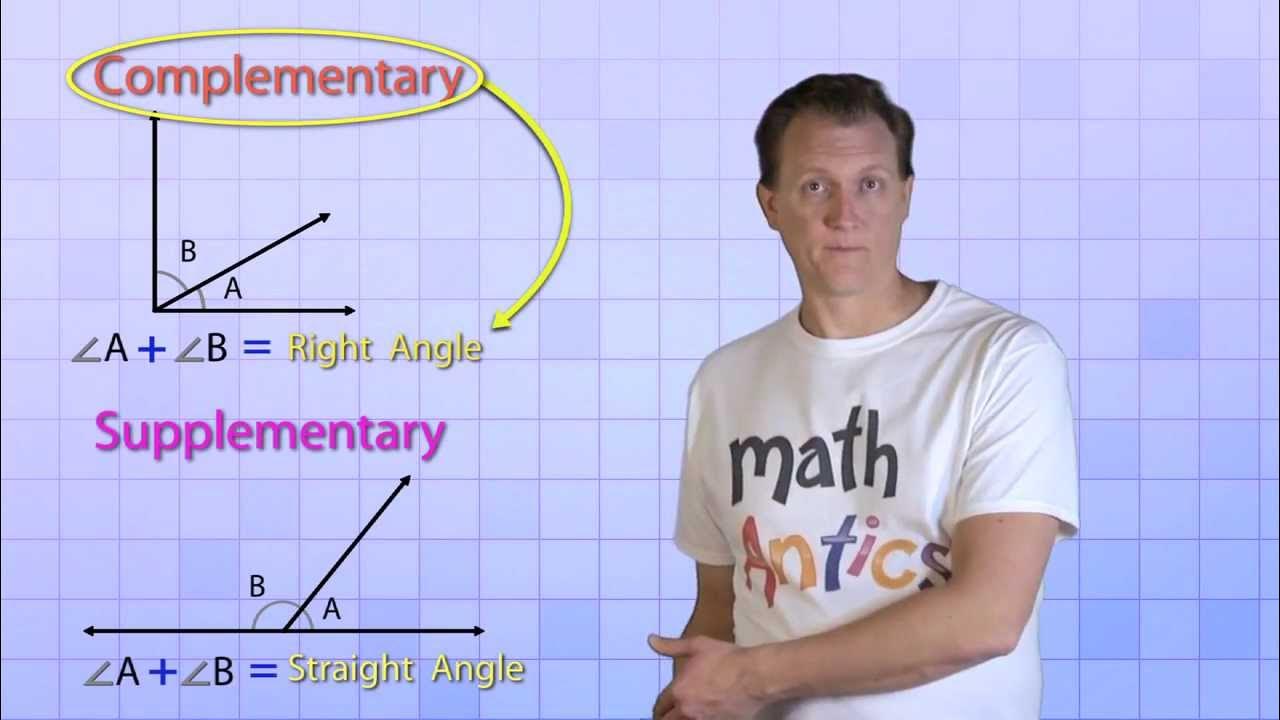Math Antics - Angles & Degrees
Summary
TLDRIn this video, Math Antics explains how angles are measured using degrees, a unit of rotation. The video starts with the basics, defining angles and introducing the concept of rotation. Viewers learn how different angles, from acute to obtuse, are measured in degrees. Key angle measurements like 90°, 180°, and 360° are discussed, along with how to use a protractor to measure angles. The video also covers complementary and supplementary angles, helping viewers solve geometry problems by applying their understanding of degrees. The video emphasizes the importance of mastering angle measurement in geometry.
Takeaways
- 😀 Angles can vary in size, from small to large, and are measured using degrees, not length.
- 😀 Degrees represent the amount of rotation, not temperature or length, and are symbolized by a small circle (°).
- 😀 A zero-degree angle occurs when two rays point in exactly the same direction.
- 😀 1 degree is a very small angle, and smaller angles do exist between 0 and 1 degree.
- 😀 As we rotate the top ray, the angle gets larger. For example, 10 degrees is still a small angle, while 45 degrees is half of a right angle.
- 😀 A right angle measures exactly 90 degrees and is important to memorize for geometry.
- 😀 Angles less than 90 degrees are called acute angles, while those greater than 90 degrees are obtuse angles.
- 😀 A straight angle measures exactly 180 degrees, where the rays point in opposite directions.
- 😀 360 degrees represents a full rotation, completing a circle, and bringing the ray back to the starting point.
- 😀 Protractors can be used to measure angles by aligning the tool with the rays and reading the degree measurement.
Q & A
What is the main topic of this video?
-The main topic of the video is learning how angles are measured using degrees.
Why can't we use a ruler to measure angles like we measure lengths?
-We can't use a ruler to measure angles because angles represent rotation, not length. A ruler measures length, while angles require a unit to represent rotation, which is why degrees are used.
What unit is used to measure angles, and how is it symbolized?
-Angles are measured in degrees, and the symbol for degrees is a small circle placed above the number (e.g., 45°).
What is the significance of a 1-degree angle?
-A 1-degree angle represents a very small rotation. It's an extremely narrow angle, and we can only see it clearly if we zoom in on it.
What happens when the two rays are perfectly aligned?
-When the two rays are aligned in the same direction, the angle between them is 0 degrees.
What is a right angle, and how many degrees is it?
-A right angle is an angle that measures exactly 90 degrees. It's formed when two rays are perpendicular to each other.
What are acute angles, and which angles from the video are considered acute?
-Acute angles are angles that measure less than 90 degrees. In the video, angles such as 10, 30, 45, and 60 degrees are examples of acute angles.
What is the difference between acute and obtuse angles?
-Acute angles are smaller than 90 degrees, while obtuse angles are greater than 90 degrees but less than 180 degrees.
What does a 180-degree angle represent, and what is it called?
-A 180-degree angle is called a straight angle. It occurs when two rays point in exactly opposite directions.
How does a protractor help in measuring angles?
-A protractor is used to measure angles by aligning its center point with the intersection of the rays and then reading the angle where the other ray intersects the curved part of the protractor.
What are complementary and supplementary angles, and how do they relate to each other?
-Complementary angles add up to 90 degrees, while supplementary angles add up to 180 degrees. The video provides examples of how to calculate unknown angles using these relationships.
Outlines

هذا القسم متوفر فقط للمشتركين. يرجى الترقية للوصول إلى هذه الميزة.
قم بالترقية الآنMindmap

هذا القسم متوفر فقط للمشتركين. يرجى الترقية للوصول إلى هذه الميزة.
قم بالترقية الآنKeywords

هذا القسم متوفر فقط للمشتركين. يرجى الترقية للوصول إلى هذه الميزة.
قم بالترقية الآنHighlights

هذا القسم متوفر فقط للمشتركين. يرجى الترقية للوصول إلى هذه الميزة.
قم بالترقية الآنTranscripts

هذا القسم متوفر فقط للمشتركين. يرجى الترقية للوصول إلى هذه الميزة.
قم بالترقية الآنتصفح المزيد من مقاطع الفيديو ذات الصلة
5.0 / 5 (0 votes)






